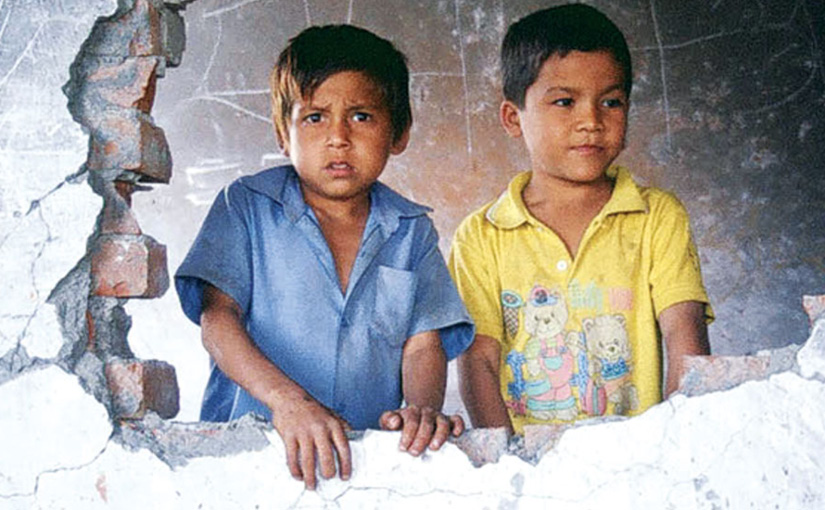By Lucia de Vries
Where to go after the war is over? Many photographers and reporters are confronted with this question after documenting violent conflicts. For Sri Lanka based photographer Stephen Champion the answer was apparent: to nature. Or more precisely: to the war on nature.
Stephen Champion was only 25 when he witnessed a man being torn to pieces by a bomb. He did not do what was expected of him: focus his camera and shoot. Instead he crouched down and cried.
Since that first death in 1986, the British photographer spent 23 years documenting the two extremely violent conflicts that raged Sri Lanka. Apart from the Tamil separatist conflict, which ended with the defeat of the Tamil Tigers in 2008, he covered the Marxist JVP insurgency, crushed by government forces by 1992. Together, the wars killed over 150,000 while more than a million got displaced.
Stephen Champion’s ‘war’ work is shown at the Photo Kathmandu’s exhibition Measures of Loss and Memories of War. The images are a selection from Champion’s War Stories, published in 2008. Displayed among the tall trees in the park behind the Patan Museum, they show the terrifying impact of war on civilians. A Jaffna schoolboy showing his drawing of a bombardment by a military helicopter, with fire and dead bodies, and scared looking civilians; a young man grieving at the side of a body; amputees and internally displaced; blood seeping from a gate; messages warning people to vote; messages warning people not to vote.
The accompanying text by Champion reads: “War is brutal at best. It is not meant to be anything else… While we continue to create systems of war, we are all very much responsible for the residual events. There is no such thing as a ‘war crime’. War is the crime.”
Among the ‘residual events’ of war, observes Champion, are violence within families, the rape of women, and the war on nature.
Champion’s nature images date back to the war days. “I am a farmers’ son,” he says, “I love soil, and animals and nature. In those early days Sri Lanka was a dream in that respect. Most houses were adobe mud structures. Traditional farmers and villagers lived in harmony with the land.” Champion’s Dharmadeepa series, published in 2009, documents this disappearing world with farmers and their animals bathing in ponds and rivers, magnificent ancient trees, traditional tools and music instruments, straw roofs. ‘This took the edge off the war,” explains Champion.
Champion’s present images are devoid of romanticism. This is partly due to the disappearance of the Dharmadeepa world: there are no more adobe houses left in Sri Lanka. But it also has to do with a sharpening of the artist’s vision. Deeply concerned about the large scale exploitation of Sri Lanka’s environment, Champion now sets out to document the island’s fast changing landscape caused by the unprecedented post-war infrastructure boom.
The move from documenting the war between humans to the war on nature was a natural one, says Champion. “There is a strong connection between warfare and environmental pollution. The first chemical pesticides were developed to act as war agents. As in war, environmental destruction helps some guys make a lot of money. And in both cases it’s the common man who suffers most.”
Sri Lanka has become a dumping ground not only for pesticides, but also second-rate medicines and e-waste, reminds Champion. The country annually loses 1.4% of its forest cover. Champion’s adopted home is believed to be the world’s fifth largest polluter of ocean plastics. The impacts are disastrous, not only for the island’s biodiversity; thousands of Sri Lankans are dying from kidney failure caused by exposure to pesticides.
Champion’s ‘Colours of Change’ series reveal this transformation in detail. Bulldozers eating into the nation’s forest hills; elephants foraging on plastics; cement fighters integrated into a Buddhist pagoda; the demolishing of historical houses; the arrival of kitsch tourism and entertainment venues. Interestingly, the images are taken with the same 1959 Rolleicord box camera Champion was gifted by his grandfather when he was nineteen years old. Once a year the negatives are developed back in the UK and the prints scanned for the use in publications.
The wars in Sri Lanka did not allow for closure: both were won brutally by state force. The underlying issues remain unaddressed. “How does one deal with what happened?” wonders Champion, “Anyone who witnessed war loses his or her innocence, myself included. I don’t really believe in closure. One cannot stop the dreams and the memories.”
But Champion is not without hope. He feels the commitment of Sri Lanka’s new President, Sirisena, to clean up the environment is a good sign. Says Champion: “My hope is that we start creating the dream that was dreamed by the idealists before the war started. That States learn to address grievances instead of crush them. It is all begins with an understanding of our interconnectedness. We should know that by now: our mixed bloodlines and DNAs proof it. We are all connected. We all depend on the same life forces and on each other. Understanding that gives us the freedom to be who we really are, and to allow others to do the same.”

